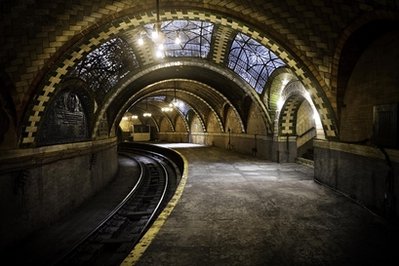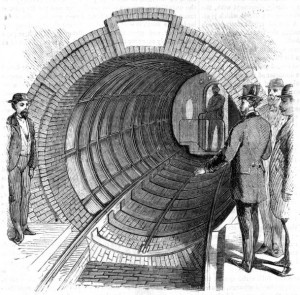A few days ago, comrade here in Portland sent me a link to a story about this:
…the “secret” New York City Hall subway station. If you happen to be in lower Manhattan, it’s well worth a visit. As Jalopnik writes, City Hall station was
…intended to be a showpiece and crown jewel of the new subway system. Unlike the rest of the line, City Hall featured tall tile arches, brass fixtures, and skylights that ran along the entire curve of the station….
although it’s not open to the general public, there’s a way in-the-know New York subway riders can still see this famous and beautiful architectural glimpse at the city’s past. The 6 train used to make all passengers leave the train at the Brooklyn Bridge stop, but no longer.
If you have a little extra time, you can stay on the train and view the City Hall Station as the train makes its turnaround.
Of course, the “secret subway” that always fascinated me most (of the ones I came across while researching KOH) was the Beach Pneumatic Transit, an early experiment in subway travel constructed by Alfred Ely Beach in by 1869. It was, as the name suggests, a pneumatic underground human-transport system. The “trains” consisted of large capsules on tracks, propelled by a gigantic 50-ton fan, nicknamed “the Western Tornado.” A demonstration tunnel was built, and 400,000 curious people rode the Beach Pneumatic Transit during its first year of operation.
The single station (the track was circular) was luxurious, adorned with frescoes and easy chairs; a statuary and a goldfish pond provided distraction for patrons awaiting their turn to ride. Unfortunately, the system fell into disrepair and was forgotten for years; the abandoned ruins of the tunnel were largely destroyed in 1912.
A concise timeline of the Beach system is here. Joseph Brennan’s site is the most comprehensive online resource for the Beach Pneumatic Transit.

